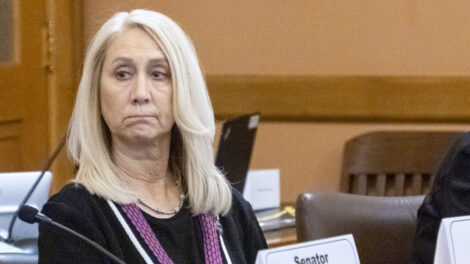Former VA nurse accused of killing 10 set free
Missouri prosecutors request dismissal based on inadequate evidence
Columbia, Mo. ? A former Veterans Affairs hospital nurse who was accused of killing 10 patients in 1992 walked free Wednesday after prosecutors said the tests that led to the murder charges were flawed.
Richard Williams, who always maintained his innocence, was released after Boone County Prosecutor Kevin Crane asked that the charges be dismissed. He had been jailed since his arrest in July 2002.
Crane, who had planned to seek the death penalty, said he had to drop the charges because of problems with the test that found traces of muscle relaxant in the 10 patients.
“Adequate evidence to show these veterans did not die of natural causes is once again absent in this case,” Crane said in a statement.
Williams’ attorney Don Catlett said the murder charges had been based on “junk science” pursued because of political and public pressure in the high-profile case. He said Williams was joyfully shocked at his release.
“He was literally shaking when he walked out of the jail. There was a great degree of, ‘I can’t believe that it’s all over,”‘ said Catlett, adding that Williams was declining requests for interviews.
After reuniting with his wife and 3-year-old son, Williams left Columbia for his home in St. Charles, a suburb of St. Louis. “He plans to go home and look for a job and try to get on with his life,” Catlett said.
Williams, 37, had pleaded not guilty to the murder charges, which accused him of injecting the patients with the powerful drug succinylcholine, causing them to stop breathing. His trial was scheduled to begin in October.
Victim’s family shocked

Former Veterans Affairs hospital nurse Richard Williams, seen in this July 22, 2002, file photo at the Boone County Circuit Court in Columbia, Mo., walked free after facing charges in 10 deaths. Prosecutors said Wednesday that the tests leading to charges against him were flawed.
David Havrum, whose father, Elzie Havrum, was among the 10 patients who died, said his family was “just totally shocked.” He said Crane called earlier Wednesday to tell his family the charges were being dropped.
“He said he was sorry but he had no choice,” Havrum said. “I thought they had something on Williams, and now they say they don’t. It is bewildering.”
Prosecutors said when filing the charges that a new test had found traces of the drug succinylcholine in the tissues of all 10 patients.
But in his statement Wednesday, Crane said Dr. Kevin Ballard, who performed the test, wrote to him this week saying he now believed “no definitive conclusions can be drawn” from the procedure.
New standards
Catlett said that the FBI was unable to duplicate Ballard’s results in Williams’ case, and that Ballard’s private lab, National Medical Services Laboratories, similarly couldn’t validate the results.
“The (new) results they have basically are that succinylcholine occurs in at least small trace amounts in all tissue, and they can’t link that to a cause of death in these individuals,” Catlett said.
A spokesman for the Willow Grove, Pa.-based lab declined to discuss the specifics of Williams’ case Wednesday but said the testing standards for succinylcholine had changed over the past year or so.
“It’s a relatively new scientific phenomenon that has been determined that there is a naturally occurring amount of the substance” in deceased bodies, said lab spokesman John Murray. What is still scientifically unclear, he said, is what levels of the substance are natural and what levels would indicate that a dosage of the chemical had been administered. “There is just not enough history on it.”
Catlett said the retesting was prompted by a similar case in Florida, where a doctor’s conviction in the death of his wife was overturned. The court said in that case succinylcholine evidence found by the lab were not verified by an outside expert.
Authorities had said 41 patients under Williams’ care in 1992 died suspiciously, but usable tissue samples existed from just 10 bodies.
Williams left the VA hospital in early 1994, moved to the St. Louis area and quit nursing.




